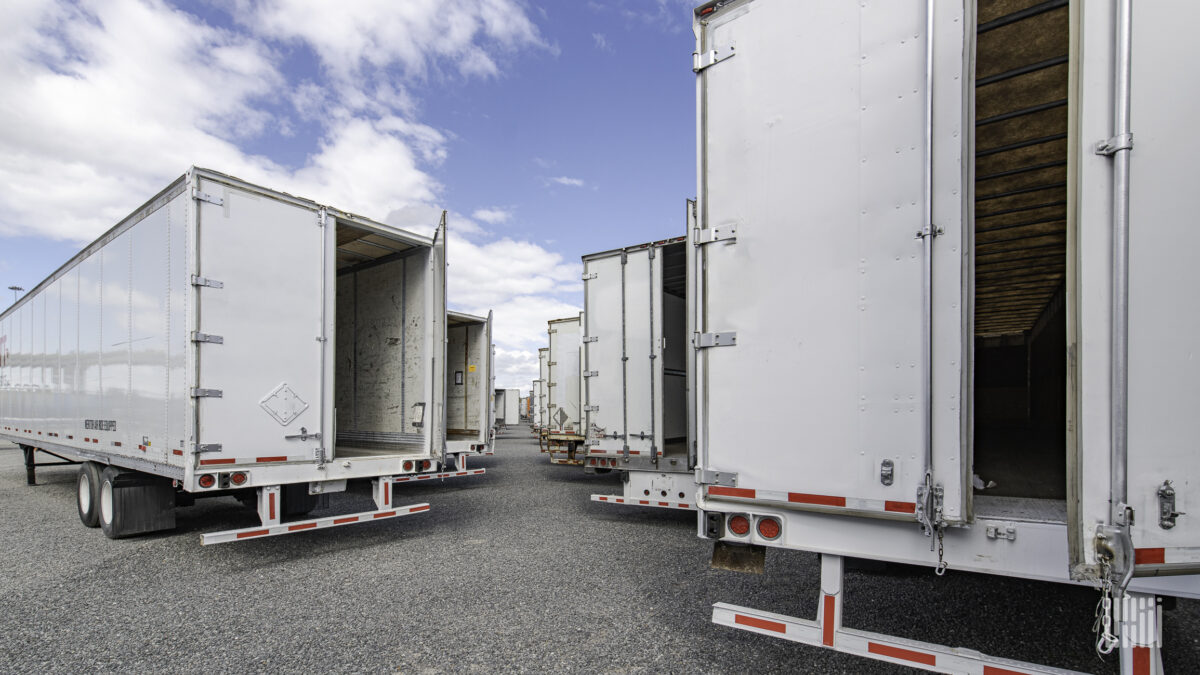Preliminary new trailer orders in March hit their highest point since December 2020. But it could be a blip because supply chains are still a mess.
“Nothing has changed in the last several months,” said Brett Olsen, marketing manager for City of Industry, California-based Utility Trailer Manufacturing Co. “We are in the same situation as all manufacturers. Demand is still strong, and there continues to be challenges resulting from the supply chain, labor and inflation.”
ACT Research said net trailer orders in March were 37,900 units, up 40% over February and 28% year-over-year.

Matching trailer orders to production
Some trailer builders are sold out of build slots for the year. They are matching new order intake to how many units they can produce. That is the approach most Class 8 truck manufacturers have been taking for several months amid a persistent shortage of semiconductors and rolling shortages of other parts.
“While any production spots are committed for the remainder of the year, we don’t place all the orders at one time as we still have to manage the moving cost environment as well as the limitations from the supply chain and labor markets,” Chris Hammond, executive vice president of sales at Great Dane, told FreightWaves.
‘A juggling act’ for trailer orders
“Right now, it’s a juggling act to give as accurate info to customers as we can.”
Those manufacturers accepting higher order volumes are filling their remaining production capacity for 2022, said Frank Maly, ACT Research director of commercial vehicle transportation analysis and research.
Manufacturers’ backlogs stretch into December. They are unwilling to open orders for 2023, Maly said, because they have little visibility into their bill of material costs, especially commodities like steel and aluminum.That prevents the setting of prices for finished trailers.
Related articles:
Won’t get fooled again: Manufacturers avoid overbooking Class 8 orders
Perfuming pigs: Fleets refurbishing older trailers while waiting for new
Hold that line: January trailer orders sync to bulging backlogs











